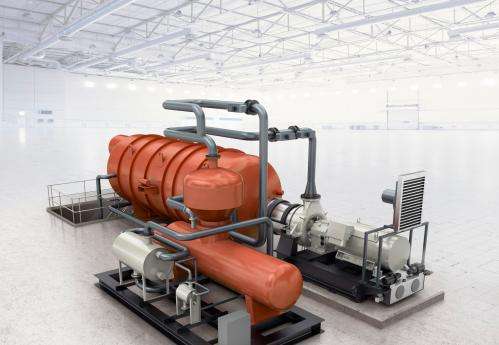One very much underutilised source of energy in our society is waste heat: we generate a lot of it. This could have significant effects on our approach to net zero, yet will create no new carbon emissions or require new generation to be built. Data centres, shopping precincts, power stations, factories, sewage plants, office blocks, even abattoirs and waste incinerators are source of a large amount of heat which just disappears into the air.
Danish engineering giant Danfoss estimates, ‘In the EU alone, excess heat amounts to 2,860 TWh/y, corresponding almost to the EU’s total energy demand for heat and hot water in residential and service sector buildings.’
Most waste heat can be captured with existing heat recovery technologies and delivered to homes and businesses by efficient, low-cost heat networks. Various local councils in the UK are developing these systems. Elsewhere in Europe, particularly Scandinavia, local heat networks are prevalent, using old coal pits as storage areas for hot water. Over 100 years ago the Danes started building large-scale heat networks powered by waste heat from electricity plants. Today heat highways connect many of the country’s major population centres, lowering fuel costs compared to the UK, even though Denmark suffers harsher winters.
In Cologne, Germany, the heat from sewage keeps schools warm. Over in London, the heat from the underground transportation system is being channelled to heat homes in the upmarket suburb of Islington. An IBM data centre in Switzerland is being used to create hot water for a swimming pool. “Data centres crop up again and again as having huge potential,” says Tanja Groth, an energy manager and economist with the UK’s Carbon Trust, a non-profit that helps to reduce carbon emissions.
Instead of relying on millions of individual gas boilers or electricity systems such as heat pumps, heat highways could form a major distribution system for capturing zero carbon waste heat at source and transporting it to where it is needed. This seems a little far-fetched, but in reality is quite practical, as the Danes have shown.
This should be designed in tandem with improved grid infrastructure, a “green grid” approach, where there is an overall plan for integrating heating and cooling, transportation, heavy industry and power generation sectors. Cheaper heating and new technologies would drive growth for businesses and workforce.
Businesses that generate their own power would reduce carbon emissions by getting any extra electricity they needed by obtaining it from their waste heat, rather than buying it from utilities. This would ensure greater energy efficiency all round.
Now companies have been set up to exploit this niche. One of these, Turboden, based in Brescia, Italy, sells a mechanical system based on the organic Rankine cycle. This is a type of external combustion engine — an invention that pre-dates the internal combustion engine used in motor vehicles. Rankine engines and similar technologies contain closed-loop systems of liquid that expand, becoming gaseous to do work, thanks to a temperature difference on the outside of the system — so users can drive a power-generating engine off waste heat. When a cement plant in Bavaria, for example, added a Rankine engine to its system a decade ago, it reduced its electricity demand by 12 percent and its CO2 emissions by about 7,000 tons.
Waste heat is a problem with benefits for society. The good news is that we already have the required technology, skills and engineering capacity. What is needed is political vision and will to legislate to get the wheels in motion for this promising aspect of energy efficiency.

